ChatGPT for Recruitment: Exploring the Power of ChatGPT
ChatGPT is the ultimate game-changer that's taking every industry by storm. This revolutionary AI assistant is not only here to tackle the boring and repetitive tasks, but it can also supercharge your candidate screening process and revolutionize your entire recruitment game.
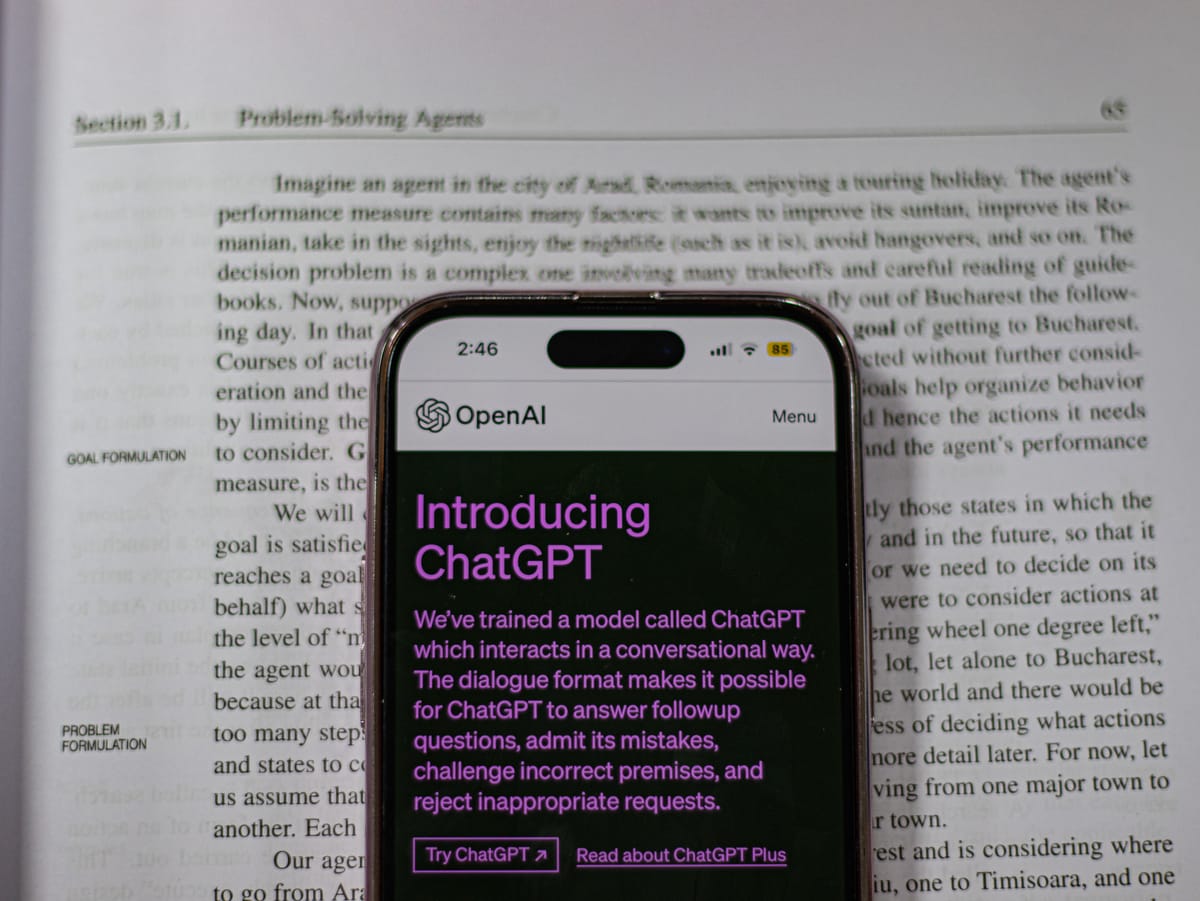

Companies are using ChatGPT for all kinds of stuff and discovering new ways to put it to use every day. But you know how it goes with these trendy technologies - there's always a bunch of hype and confusion that goes along with it.
So let's take a closer look at what ChatGPT can really do for talent acquisition. In this article, we're going to explore the use cases of ChatGPT spread across the recruitment process and see just how powerful this AI innovation can be for finding top-notch candidates.
Key takeaways from this post
- ChatGPT is one bandwagon every professional has to get on, irrespective of the industry they are serving. With its human-like responses, it can generate information similar to those generated by humans (sometimes indistinguishable).
- ChatGPT can be used across the recruitment process, from generating job descriptions, interview questions and even onboarding candidates.
- You can generate excellent ready-to-use as well as first or second drafts when it comes to email templates and recruitment marketing.
- This ready-to-use content and information can be generated by experimenting with the type of prompts provided to ChatGPT.
- How you use ChatGPT for recruiting is only limited by your imagination.
What ChatGPT means for the work of a recruiter?
Every time you go on Twitter, you see a tweet which says, "Here are 15 ways that ChatGPT can 10x your creativity..." or "10x your SEO returns..." or a million other things. It is a versatile product whose usage is not limited to one field.
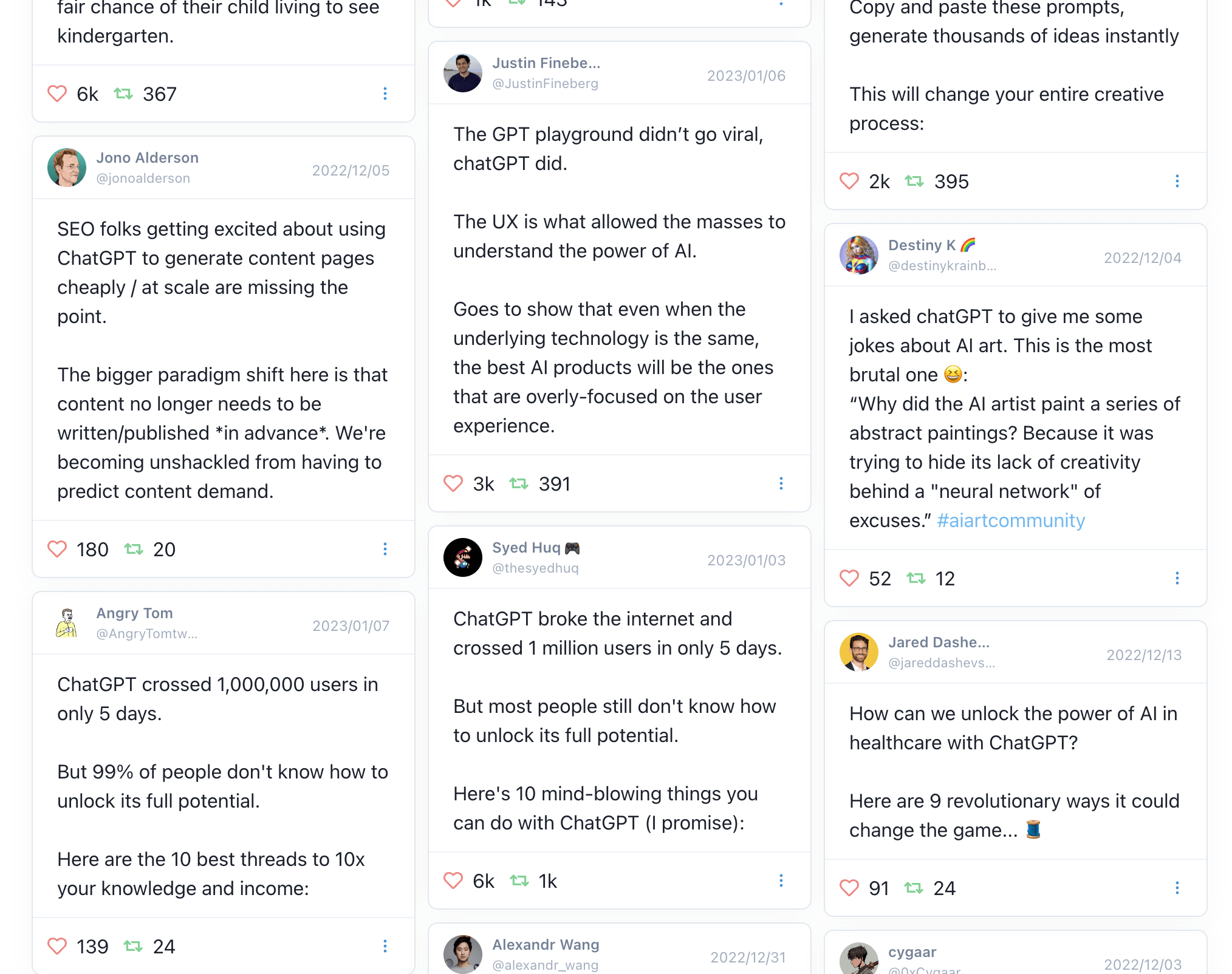
You have examples of people asking ChatGPT to script conversations with an "unrealistic hiring manager".
There are examples of creating email templates with ChatGPT.
You even have ChatGPT writing a memo informing a mass layoff of employees while simultaneously promoting several executives outlined with an MLK quote?!
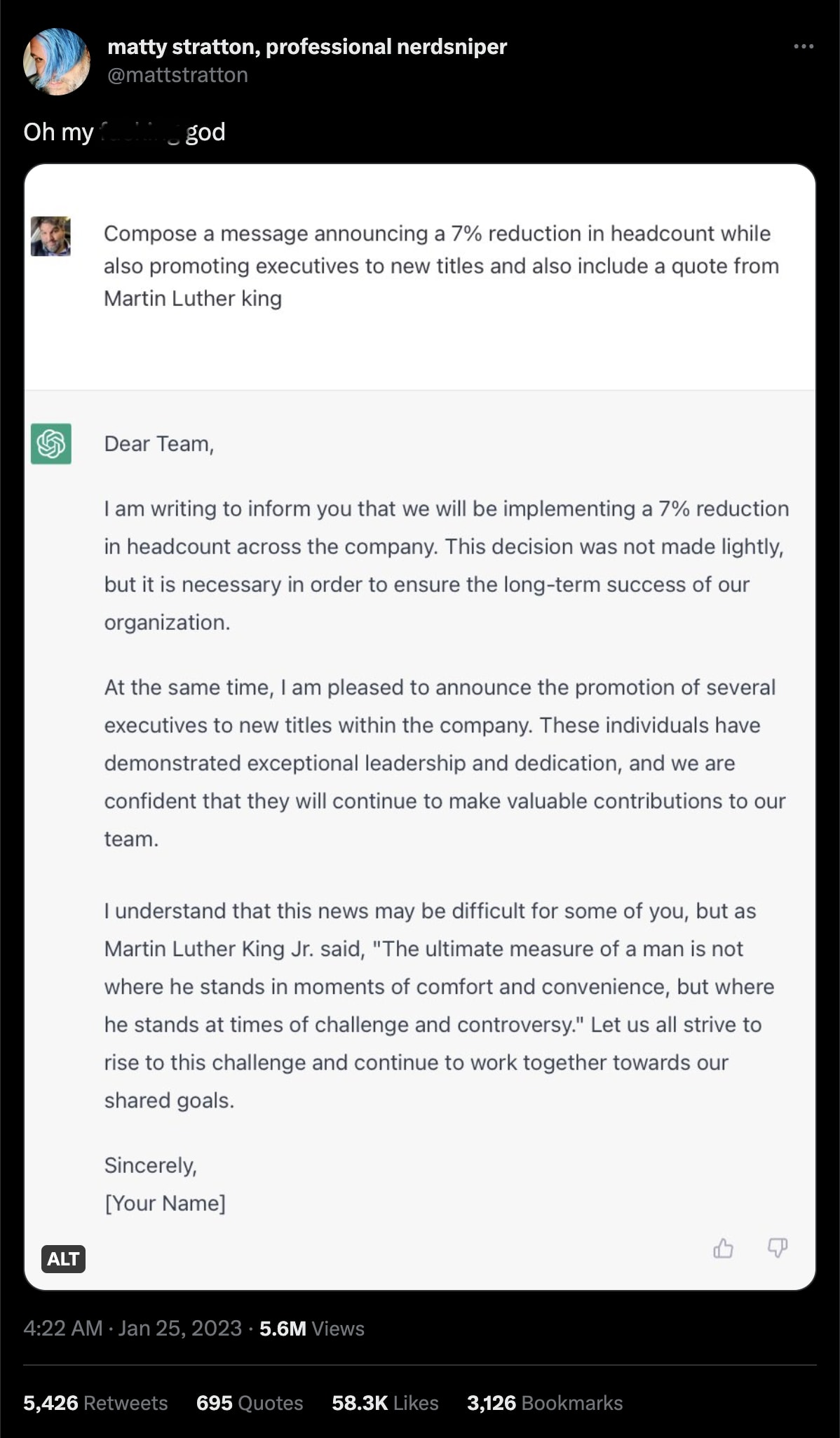
In short, as a recruiter, ChatGPT serves you to the extent of your imagination and creative application.
ChatGPT use cases in recruitment
Now, let's break down the whole recruitment process and see where ChatGPT can lend a helping hand.
A typical recruitment process involves the following:
- Identifying the need for a new hire
- Conducting job analysis
- Creating a job description
- Posting the job
- Screening candidates
- Conducting interviews
- Performing background checks
- Extending a job offer
- Facilitating onboarding
Creating a job description
ChatGPT can help create detailed and accurate job descriptions by analyzing the role and responsibilities of the job. We put ChatGPT to the test by asking it to create a job description for a senior front-end developer.
Prompt: Create a job description for a senior front-end developer. Include the key responsibilities and must-have and good-to-have requirements. Ensure that the job description has the necessary keywords so that it is optimized for SEO purposes. Make the job description appealing and convey the message that the organization is a fun-loving and driven organization.

Searching for candidates (boolean search strings)
Create Boolean search strings to find candidates who fit perfectly into your job description.
Prompt: Create a Boolean search string for LinkedIn to identify a Senior Front-end Developer with experience in D2C products. The developer must have experience in React and must be based in the U.S.

Creating email templates
Say you've found the perfect candidate for a role you're hiring for, but you want to send them a personalized email to entice them to apply. Simply plug in their info into ChatGPT and let it work its magic!
Prompt: Create a personalized email to send to this candidate stating that we are hiring for a senior front-end developer position.
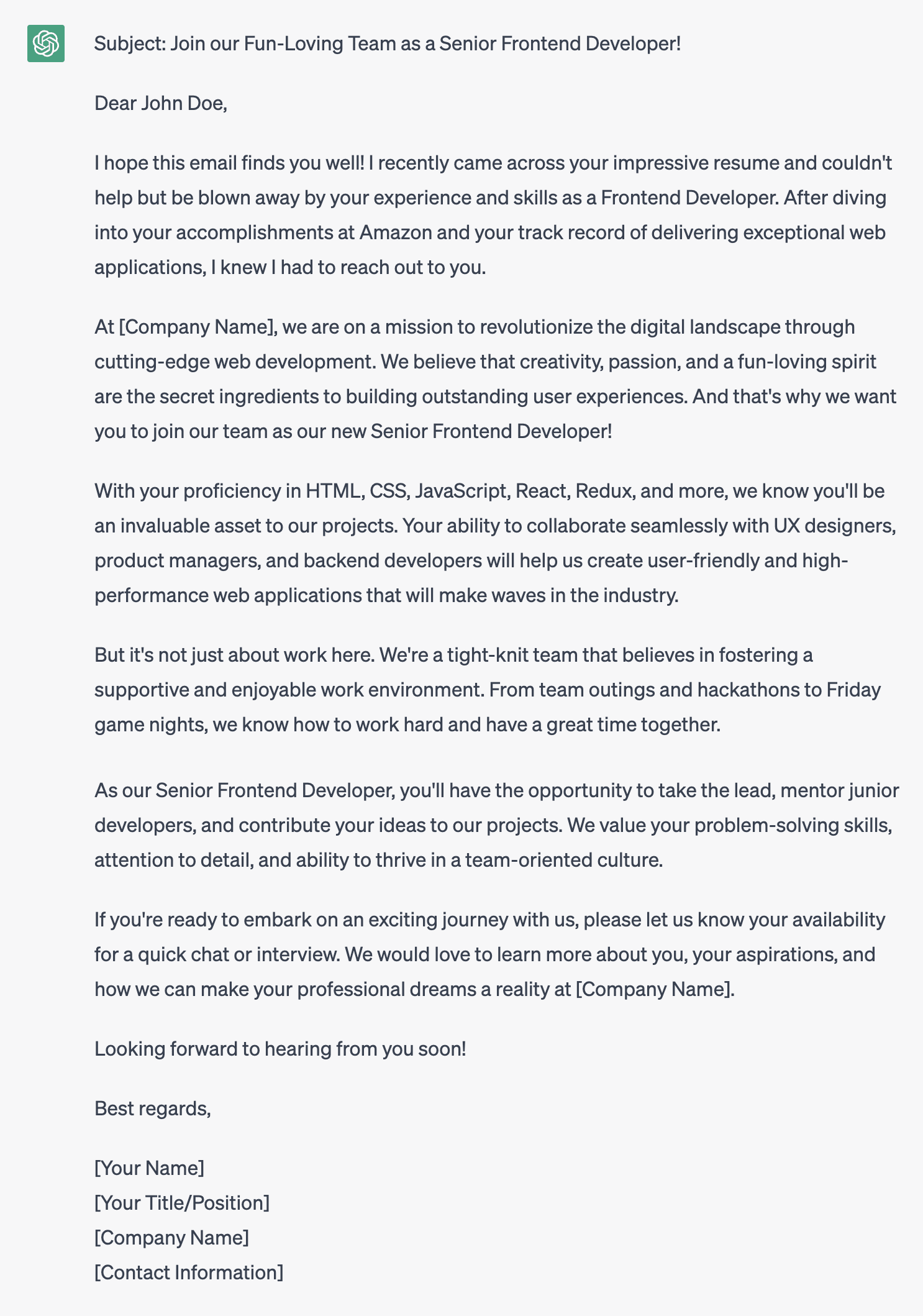
Posting the job
Once you've crafted the job description, it's time to spread the word and advertise your job posting for the world to see.
Prompt: For the job description created for a senior front-end developer, create a LinkedIn post promoting the job. Create a clickbait post. Use a casual and fun tone.
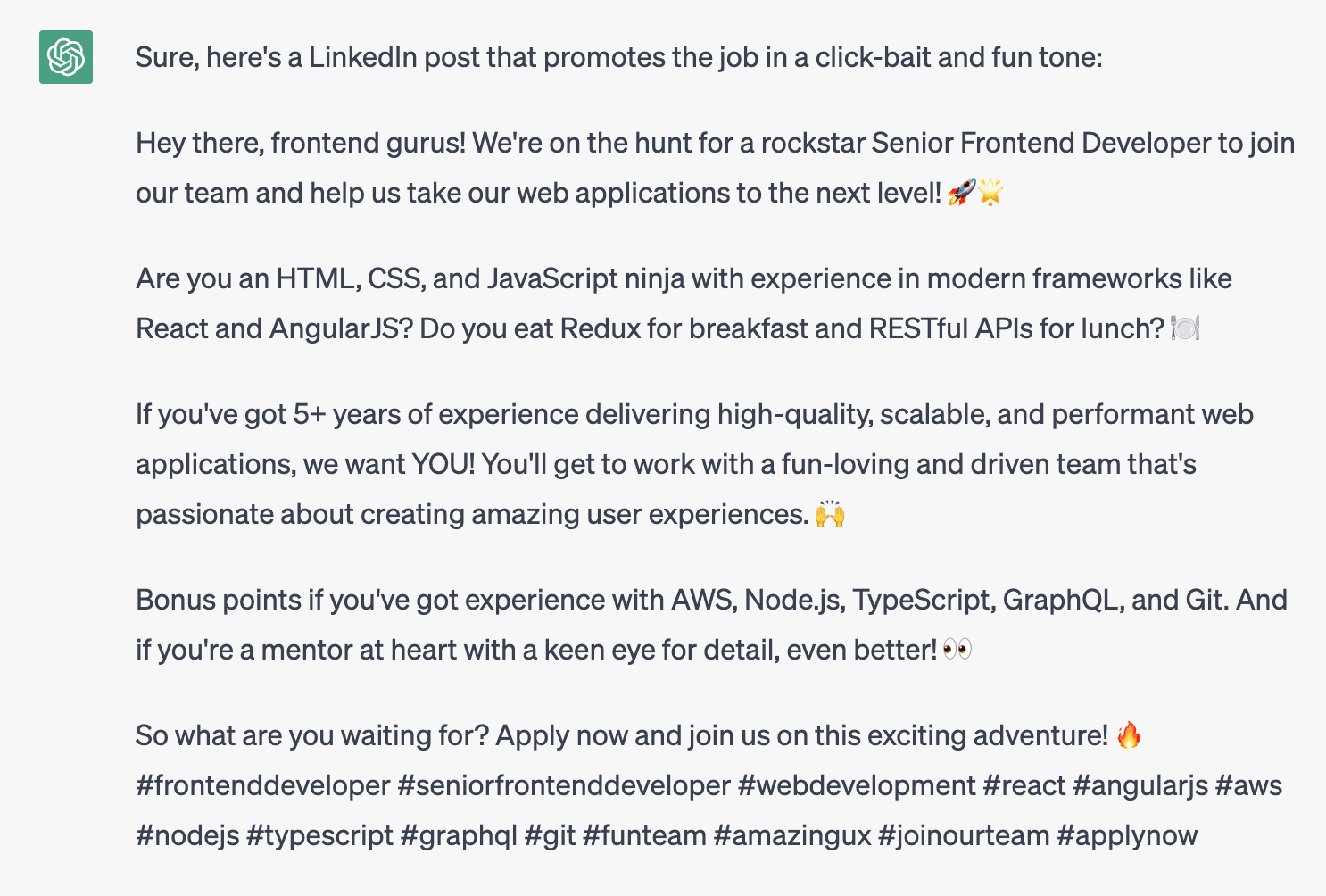
Screening candidates
Resumes can be filled with fancy jargon and buzzwords that candidates use to catch our attention. By using ChatGPT to "dumb down" the resume, it can help you extract the essential information you need to make an informed screening decision. You can also use an AI resume parser to analyze hundreds of resumes quickly.
We put ChatGPT to the test by giving it a sample resume (yes, also created through ChatGPT) for a senior front-end developer role.
Prompt: For the above resume, give a list of pros and cons with respect to the job description for the senior front-end developer position.

Preparing for interviews
Now, let's say you've decided to interview the candidate you screened in the previous section, armed with the pros, cons, and the candidate's resume. ChatGPT can assist you in preparing for the interview by generating relevant and insightful questions to ask.
Prompt: Based on the above resume and the pros and cons outlined for the resume concerning the frontend developer job, give a set of interview questions to ask in the final round of the interview for the frontend developer (senior) role.
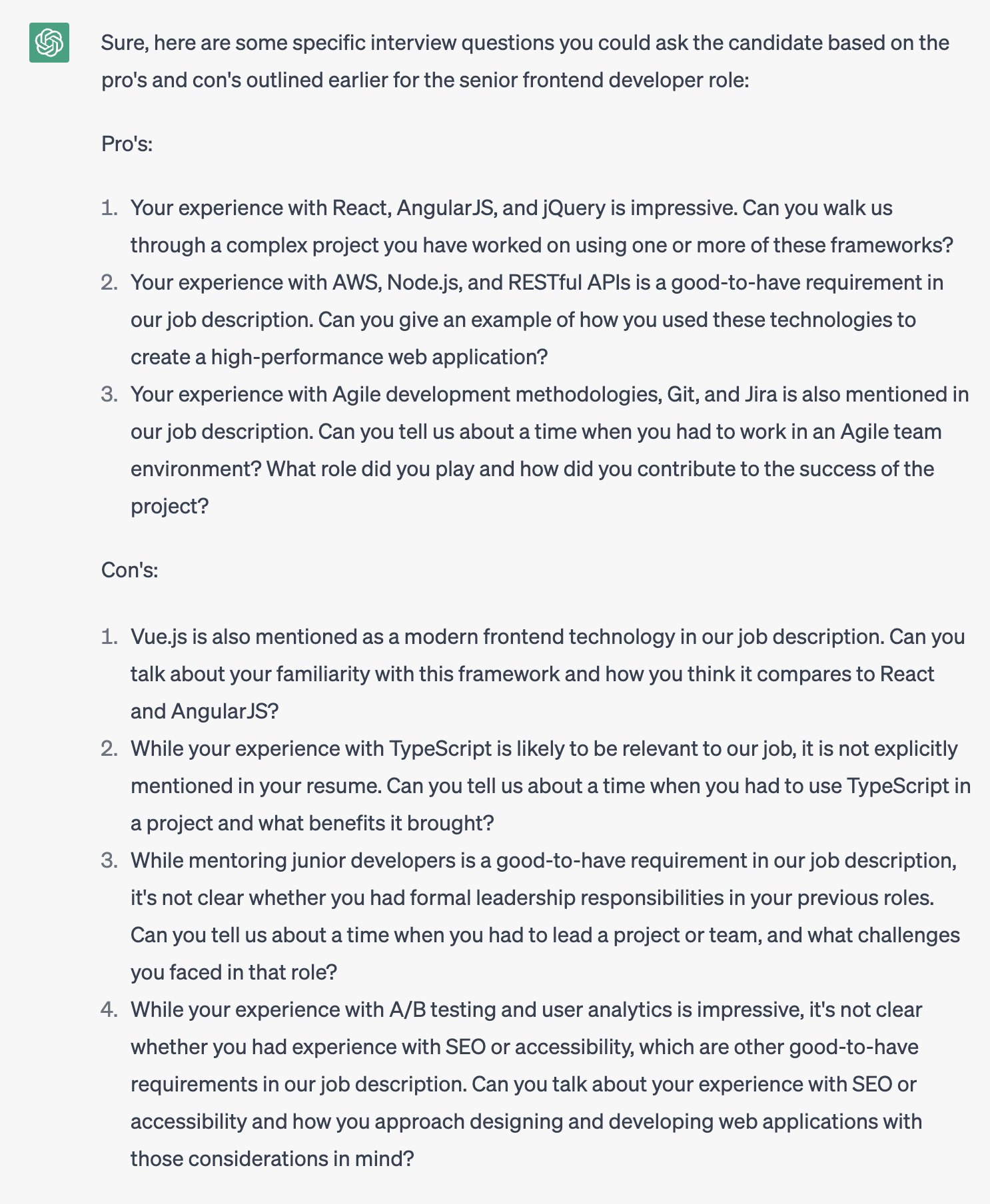
ChatGPT can help you generate not only specific situational interview questions but also generic interview questions based on the role you're hiring for.
Prompt: Create a list of 20 interview questions for the role of a product manager.
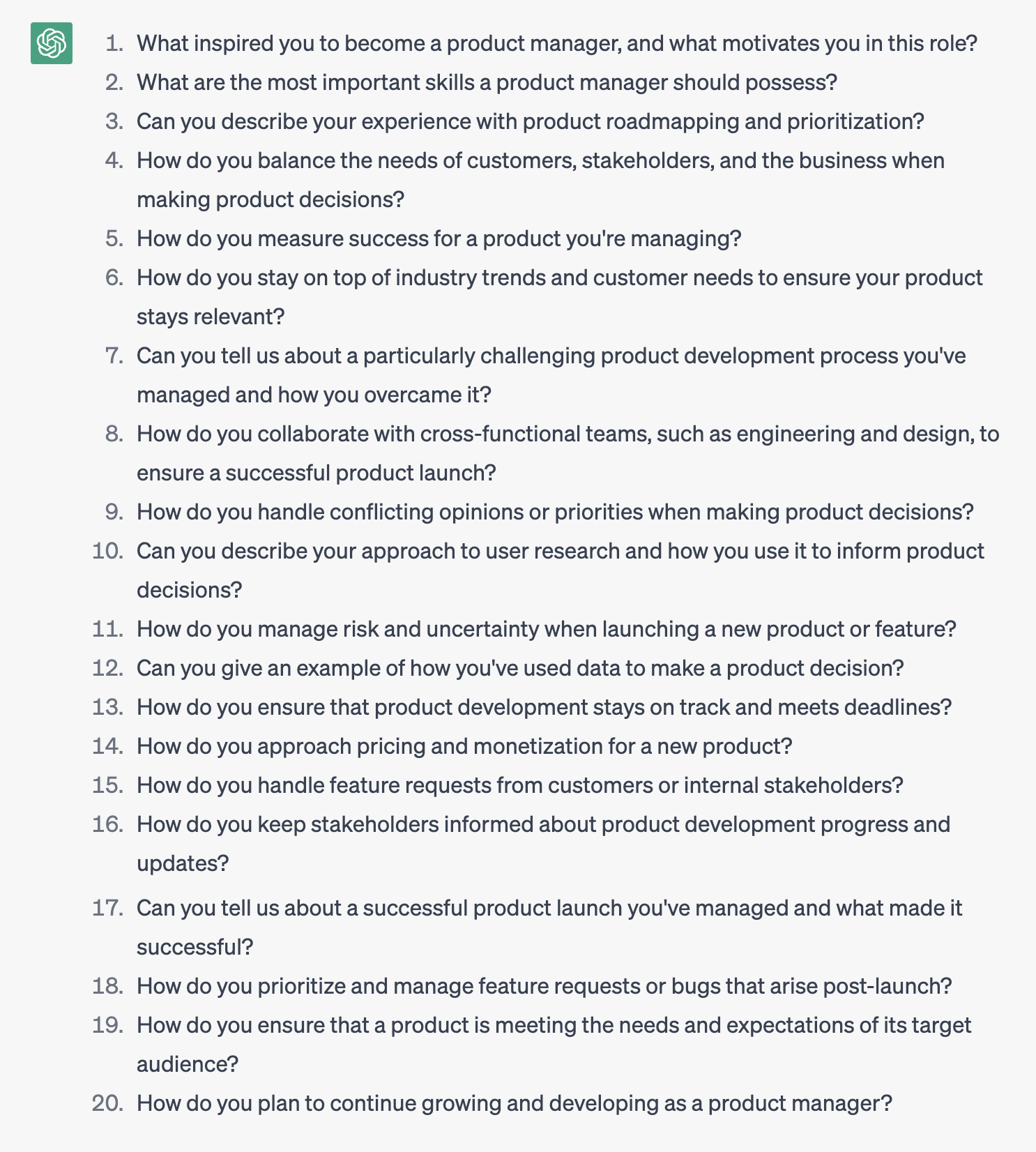
Facilitating onboarding
For the candidate you screened earlier in the "Candidate Screening" step, we can leverage ChatGPT to generate an onboarding message specifically tailored to them.
Prompt: Write a fun-loving, casual onboarding message for the person hired with the above resume.
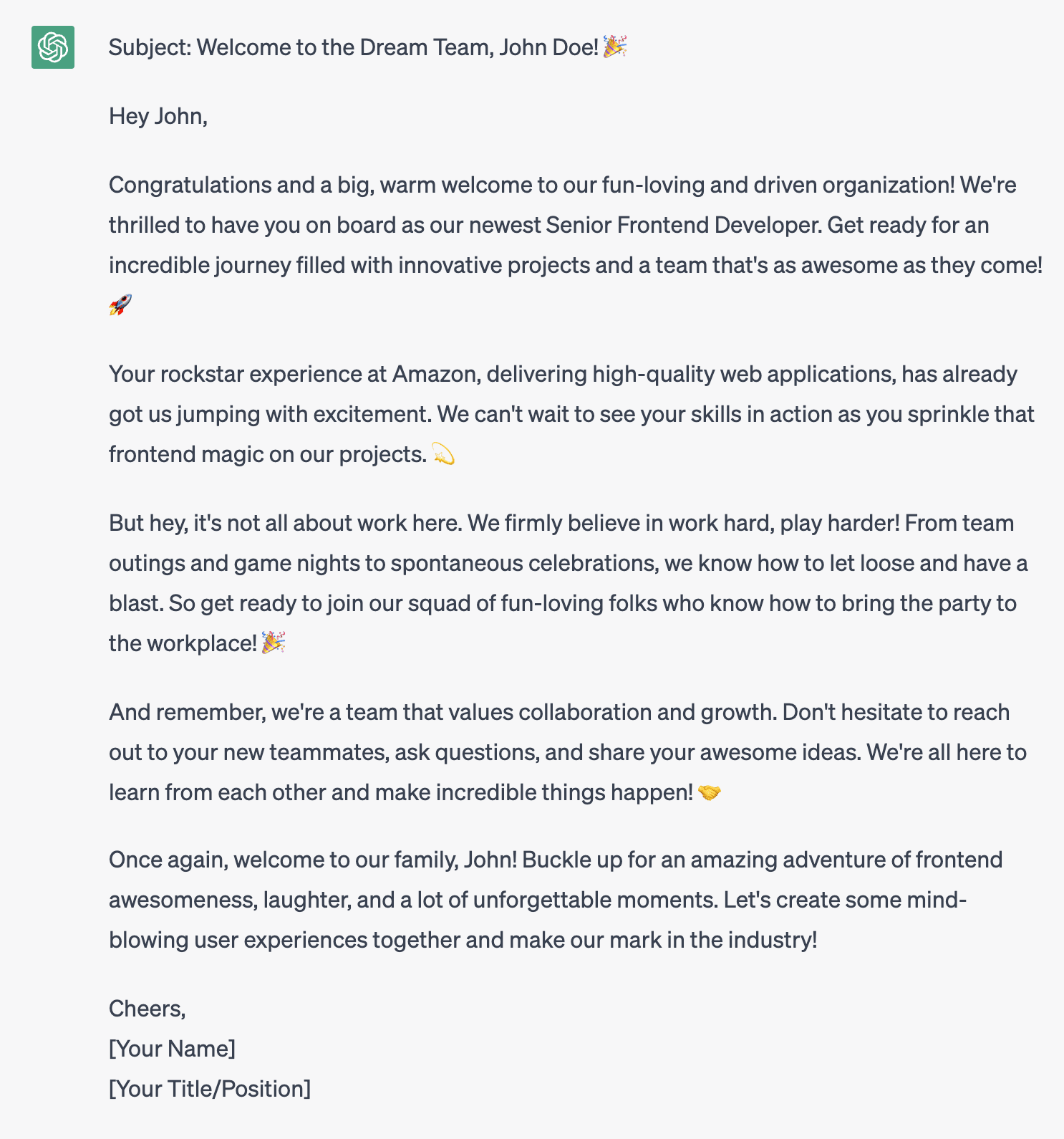
Responding to candidates
We've covered various stages of the recruitment process using ChatGPT, but we shouldn't overlook the candidates who were rejected or reached out when there wasn't a suitable opening. It's important to maintain a positive and professional relationship with them.
Prompt: Respond to this candidate, and mention how there are no roles at our company and to keep an eye out, and if a role opens up, then they could apply.
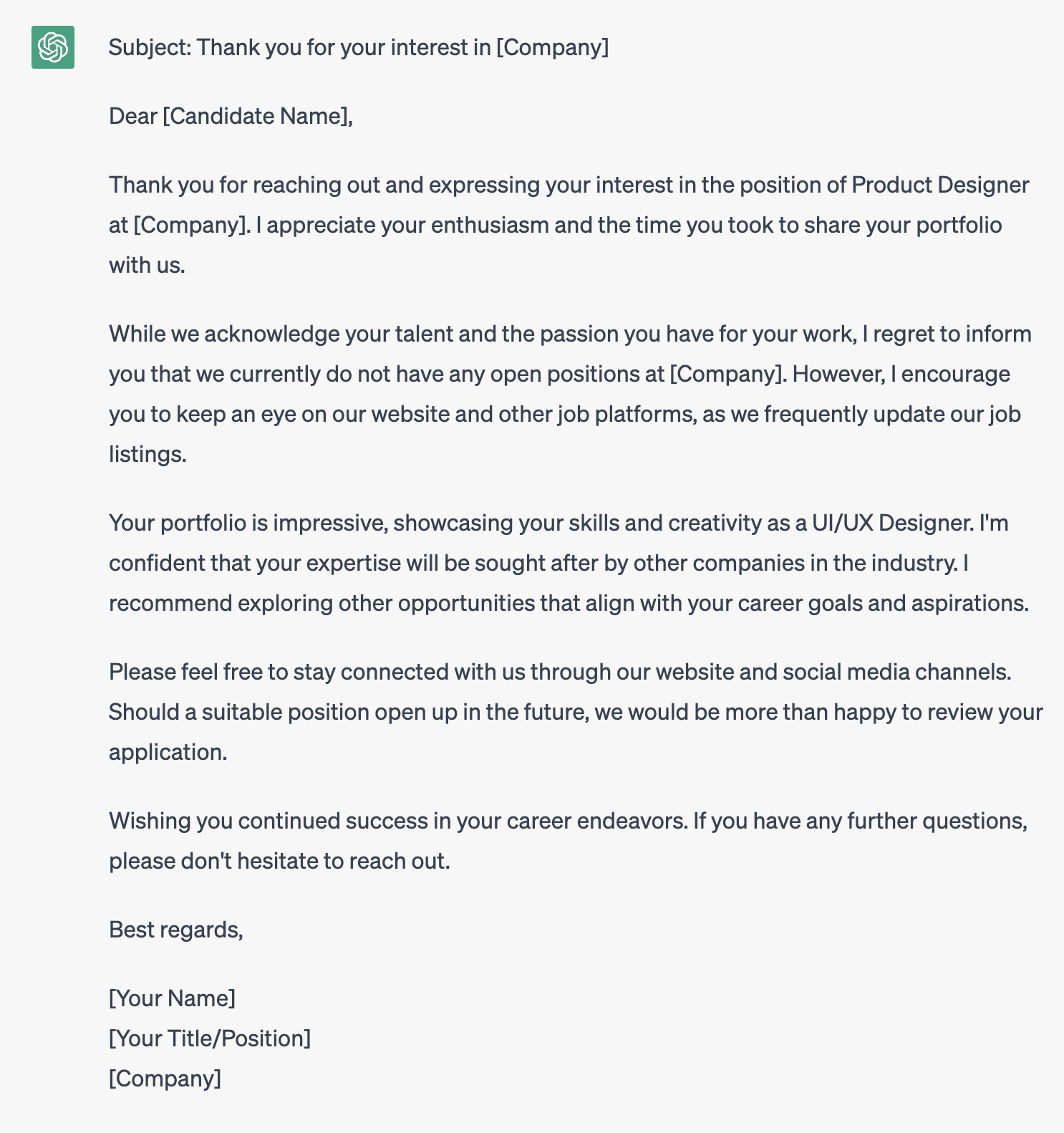
What can't ChatGPT do?
Although ChatGPT generates "human-like" responses, it still isn't capable of replacing that human, especially in a human-centric role such as hiring manager.
Here is where ChatGPT falls short at:
Lack of domain-specific knowledge: While it can provide general information about recruitment processes and best practices, it may not have deep domain-specific knowledge. The response it provides completely depends on the input you provide, and even slight changes in the input (from candidate to candidate) can result in a non-uniform screening process.
Potential biases in responses: We have already seen thousands of examples of ChatGPT being pretty biased in many ways. You cannot risk getting that bias into the hiring decision when it comes to recruitment.
Lack of human intuition and judgment: While ChatGPT can assist with generating interview questions, assessing resumes, and providing general guidance, it lacks the human intuition, experience, and judgment that human recruiters bring to the table.
Inability to assess non-verbal cues: Recruitment often involves evaluating non-verbal cues, such as body language and facial expressions, during interviews. ChatGPT, a text-based model, cannot interpret or provide insights based on non-verbal communication.
On a final note
ChatGPT has emerged as a game-changer in the recruitment landscape, offering a multitude of use cases that streamline and enhance the entire hiring process. From creating job descriptions to screening candidates, conducting interviews, and facilitating onboarding, ChatGPT is an invaluable tool for recruiters and HR professionals.
It proves to be an invaluable ally throughout the recruitment journey, automating mundane tasks, enhancing efficiency, and enabling recruiters to focus on strategic aspects of talent acquisition. It not only simplifies the process but also helps foster a positive candidate experience.
Overall, the benefits of using this far exceed the limitations of ChatGPT. Don't even think twice before adding it to your recruitment process. It's a game-changer!
FAQs
What is ChatGPT?
ChatGPT is a language model developed by OpenAI. It is based on the GPT (Generative Pre-trained Transformer) architecture. It is designed to generate human-like responses to text inputs and engage in conversational interactions.
What are the applications of ChatGPT in recruitment?
ChatGPT can assist in various ways, such as candidate screening, answering frequently asked questions, administering pre-employment assessments and many more.
Can ChatGPT replace human recruiters?
While AI can assist in automating certain aspects of the recruitment process and provide valuable insights, human recruiters bring essential skills such as human judgment, intuition, and contextual understanding that are difficult to replicate with technology alone.

